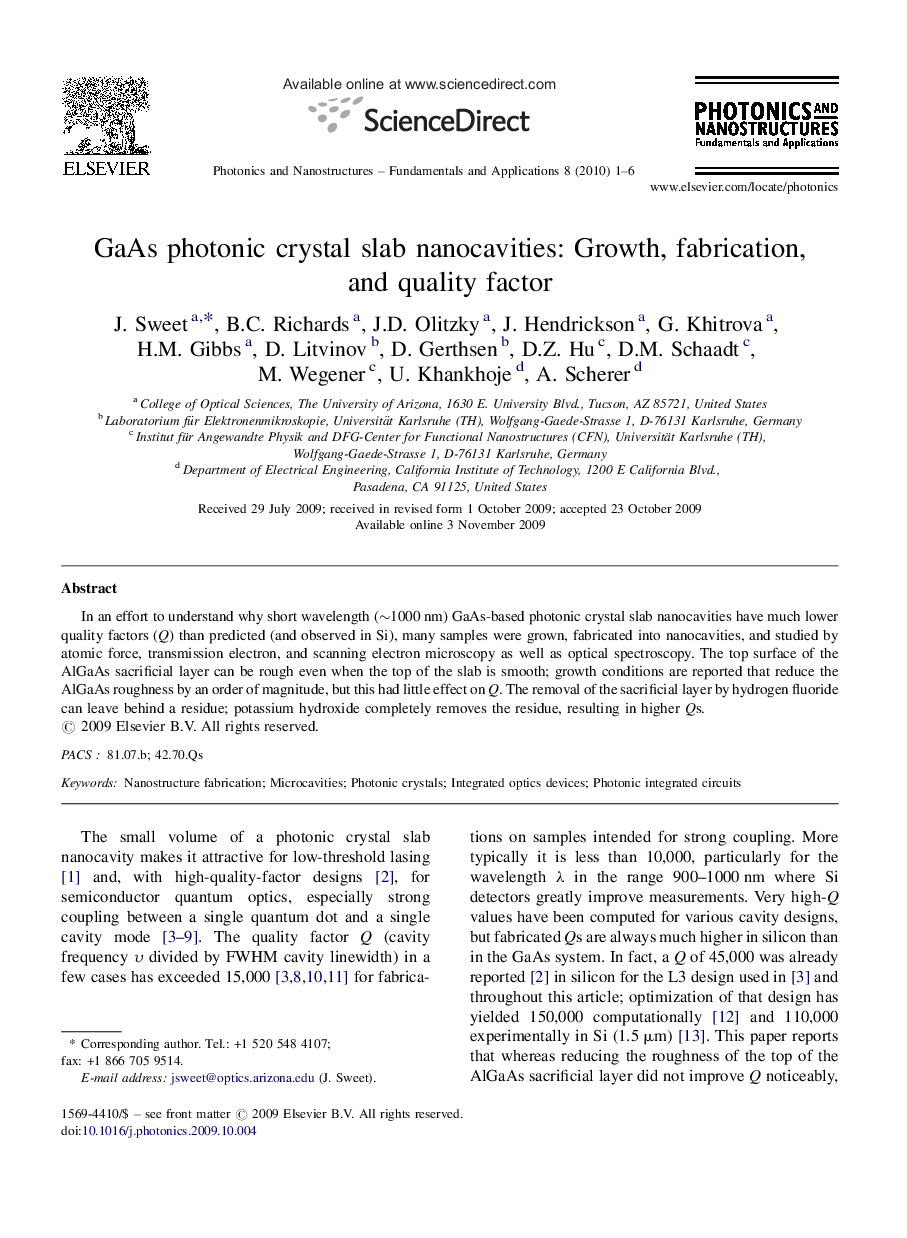| Article ID | Journal | Published Year | Pages | File Type |
|---|---|---|---|---|
| 1543490 | Photonics and Nanostructures - Fundamentals and Applications | 2010 | 6 Pages |
Abstract
In an effort to understand why short wavelength (∼1000 nm) GaAs-based photonic crystal slab nanocavities have much lower quality factors (Q) than predicted (and observed in Si), many samples were grown, fabricated into nanocavities, and studied by atomic force, transmission electron, and scanning electron microscopy as well as optical spectroscopy. The top surface of the AlGaAs sacrificial layer can be rough even when the top of the slab is smooth; growth conditions are reported that reduce the AlGaAs roughness by an order of magnitude, but this had little effect on Q. The removal of the sacrificial layer by hydrogen fluoride can leave behind a residue; potassium hydroxide completely removes the residue, resulting in higher Qs.
Related Topics
Physical Sciences and Engineering
Materials Science
Electronic, Optical and Magnetic Materials
Authors
J. Sweet, B.C. Richards, J.D. Olitzky, J. Hendrickson, G. Khitrova, H.M. Gibbs, D. Litvinov, D. Gerthsen, D.Z. Hu, D.M. Schaadt, M. Wegener, U. Khankhoje, A. Scherer,
